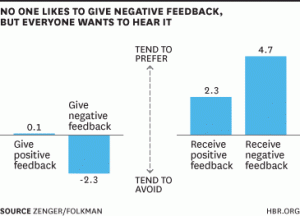Today’s ideal leadership candidates are not necessarily employees with the most experience or expertise. One of the key differentiators among top leaders is leadership agility, or the ability to balance competing demands. Agile leaders foster connections with team members and customers, enable teams to achieve peak performance, and encourage both innovation and change.
Contents
- What is Agile Leadership?
- The 3 Critical Characteristics of Agile Leaders
- Agile Leadership in Action
- Strategies for Building Agile Leaders
- The Future of Agile Leadership
1. What is Agile Leadership?
Agile leadership is the ability to balance multiple challenges and sometimes contradictory demands. Agile leaders are effective change agents who foster collaboration, build high performing teams, and drive consistent results. With their unmatched adaptability, agile leaders effectively balance competing demands, coordinate action across levels, and respond to constantly changing situations.
An agile leader recognizes that one leadership style doesn’t fit all situations. It is a mindset that allows leaders to react to unique circumstances and respond effectively. Rather than drawing distinctions between the role of “leader” and “manager,” agile leaders see the value of both roles. For the agile leader, finding ways to inspire and engage employees is fundamentally connected to the practical concerns of driving productivity. Leading and managing go hand-in-hand, which allows agile leaders to better understand how to respond to new situations and anticipate how changes will impact their teams and organizations.
2. The 3 Critical Characteristics of Agile Leaders
Agile leaders possess three critical capabilities that allow them to excel and provide significant value to their teams and their organizations. By learning to Connect, Adapt, and Deliver, they develop the flexibility that true leadership agility demands.
Connect
Agile leaders must first understand how to establish meaningful connections in the workplace before they can make an impact. Their ability to inspire, influence, and foster a collaborative environment is what helps to set them apart from their peers. They exhibit leadership behaviors that set the tone for organizational alignment, which contributes to employee and stakeholder buy-in. Leading by example is one of the best ways for agile leaders to establish the credibility that allows them to use influencing strategies more effectively.
Part of what allows agile leaders to connect so effectively is their ability to maintain self awareness. They understand their own emotions and motives, which makes it easier for them to keep their own personal biases in check and empathize with team members. Although many agile leaders naturally possess high emotional intelligence, they can greatly benefit from development programs that incorporate strategies to improve skills to gain the commitment of others, manage conflicts, and collaborate across organizational boundaries.
Demonstrating personal integrity is also critically important for agile leaders. By acting with consistency, honoring commitments, and taking responsibility for actions and decisions, they take gradual steps toward building trust and support among their team members. When leaders are perceived to lack integrity, they will find it much more difficult to influence others and establish productive connections.
Adapt
An effective agile leader has the ability to recognize changing dynamics and adjust rapidly to overcome challenges, reimagine strategic direction, and propel transformation and innovation. Situational awareness is a key competency in this area because it helps leaders to understand how external and internal events can impact a company’s effectiveness as well as affect the people involved at various levels of the organization. Agile leaders know that applying the same strategies repeatedly without making adjustments based on the situation can severely undermine performance.
Systems thinking also helps agile leaders to recognize how different elements of an organization interact with one another, which allows them to anticipate how changes in one area may impact others. This is especially important in large organizations, where any action might produce various consequences in other departments, many of them unintended.
Understanding both contextual situations and organizational structures helps agile leaders make decisions that minimize trade-offs and account for both short and long-term goals. They learn to strike a balance between efficiency and innovation, often without complete or perfect information.
Deliver
While it’s important for leaders to be able to connect with others and adapt to changing circumstances, they must ultimately be able to deliver positive results for their organizations. Effective agile leaders find ways to drive performance and generate consistent and reliable results by investing in the right accelerators, and cultivating high-performing teams committed to customer and shareholder value creation. In many ways, the ability to deliver is dependent on the other agile leadership characteristics. The ability to connect and adapt puts them in a position to deliver, but unless they can follow through, their teams will have difficulty accomplishing their goals.
Agile leaders tend to excel at prioritizing. They identify big-picture goals and understand how to take gradual steps toward achieving them. While they are effective at dealing with day to day challenges, they never lose sight of the organization’s overarching mission. Through careful planning, time management, persistence, and patience, agile leaders continuously adjust their efforts to keep their teams productive, efficient, and engaged.
3. Agile Leadership in Action
All organizations must be able to balance what appear to be mutually exclusive challenges. Emphasizing one almost always comes at the expense of the others, forcing them to make decisions based on potential opportunity costs and existing sunk costs. Agile leadership rejects the notion that balancing these factors simply can’t be done. These leaders excel at managing trade-offs when multiple aspects of an organization don’t align, allowing them to guide their companies through difficult challenges without losing sight of their guiding principles. This requires them to understand the connections between different aspects of their business and anticipate how a shift in any area could have lasting ramifications in other areas.
In almost any organization, there are three key factors that impact organizational performance. All three of them are vital to success, but emphasizing one can come at the expense of the others. Agile leaders must be able to focus on all three factors simultaneously while minimizing disruption and trade-offs.
Connect With People
Employees with the knowledge and skills needed to execute business strategy. Agile leaders can Connect with people by:
- Providing ongoing development opportunities to engage talent.
- Establishing recognition programs.
- Improving work/life balance.
Adapt To Change
The need for innovation to continuously improve operations and respond to changes in a competitive market. Agile leaders can Adapt to change by:
- Prioritizing research and development to foster innovation.
- Conducting comparative testing and benchmarking against competitors.
- Gathering data to better understand customer needs.
Deliver Productivity
The ability to maintain high levels of performance, quality, and efficiency at an optimal cost. Agile leaders can Deliver productivity by:
- Establishing goal-setting programs.
- Standardizing policies and procedures.
- Implementing cost reduction programs.
4. Strategies for Building Agile Leaders
The demands of the global economy have placed incredible pressure on organizations across a variety of industries. To meet the challenges of the 21st century effectively, companies need to invest in talent development strategies to build agile leaders who have the flexibility and adaptability to manage diverse teams and balance a growing number of organizational demands.
Building successful agile leaders is an important investment to ensure a clear path to sustainable success. Organizations should leverage a robust assessment process to identify high-potential leadership candidates who can demonstrate agility, and development programs need to focus on helping them build the skills to succeed.
Promote Transformational (and Transactional) Leadership
Agile leaders need to be able to take a macro-level view of an organization in order to provide the transformational insights that enable future success and deliver consistent, reliable results. With this view in mind, they are able to define both the values and goals of a company, setting atone and agenda that can serve as a basis for unity and commitment while leaving enough flexibility to adapt to shifting circumstances. As organizations become larger and more diverse, agile leaders need to find new ways to inspire and motivate people as a group. Building a shared vision of what the company stands for is one of the most effective means of forging a shared community.
But agile leaders can’t make the mistake of focusing only on the transformational aspects of leadership. They also need to be able to deliver on the transactional aspects of leadership that day-to-day operations demand. Having a big-picture idea of where the company is going won’t do anyone much good if short-term operational goals can’t be met. Agile leaders, then, must learn to provide inspirational leadership and operational efficiency, which helps them to deliver on a consistent basis.
From a development standpoint, this means that high-potential leaders need to build the skills for creating a long-term strategy as well as the competencies of day-to-day management. Leadership candidates drawn from previously siloed departments, for example, will need to have exposure to other areas of the company to better understand the big picture.
Encourage Critical Thinking
Critical thinking is the process of evaluating the truthfulness and value of information and opinions in a systematic, purposeful, and efficient manner. Leaders with good critical thinking skills tend to make better decisions, allowing them to anticipate the consequences of choices, handle crises effectively, and make more successful hires and promotions. These qualities help agile leaders to adapt to changing circumstances and deliver results far more effectively.
Agile leaders typically possess the characteristics necessary to become better critical thinkers. They are inquisitive, analytical, and reflective, which makes them open to evaluating new ideas objectively and using reason to reach their decisions. Organizations seeking to develop agile leaders need to emphasize critical thinking skills to leverage these tendencies. Development programs that teach high-potential leaders how to identify and minimize bias, distinguish fact from opinion, and understand how systems within organizations function is incredibly valuable to building agility and learning how to adapt in ways that propel transformation and innovation.
Give Plenty of Feedback
High-quality feedback is an essential part of the development process for aspiring leaders. Without ongoing assessment, it can be difficult for them to know what they’re doing well and where they still need to improve. Agile leaders, in particular, thrive on quality information, so feedback is especially important for them.
To maximize its effectiveness, feedback should be specific, timely, and balanced. It should focus on key points that are fresh in the employee’s mind and offer clear recommendations for improvement. As a two-way dialogue, it provides the opportunity for everyone to ask questions and share their thoughts. While not all feedback needs to be positive, it’s important that criticisms are framed as opportunities to solve problems. This helps avoid a negativity bias that can sometimes cause people to become defensive. Feedback should also be balanced and include some positive reinforcement as well, highlighting successes that let candidates know they’re on the right path.
Support (Some) Risk-Taking
Agile leaders need to be comfortable taking chances. The challenge for organizations is to create a leadership culture that encourages risk-taking while also promoting accountability. It’s easy to promote the cliched maxim of “fail early” until the consequences of those failures impact the bottom line. Organizations that have systems in place to account for risk and manage failure are better equipped to develop successful agile leaders. For instance, Google’s famous “postmortem” process and Honda’s view of failure as a path to future success create environments that allow agile leaders to learn from pursuing innovative new ideas without completely disrupting the status quo.
Learning how to adapt to changing circumstances and deliver positive results will often require some measure of risk-taking. Agile leaders use their ability to connect with others to gain a sense of how their teams will handle being pushed outside their comfort zone during change initiatives or other unusual situations. In order to build more stronger teams, however, organizations need to allow these aspiring leaders to take a few chances and grow accustomed to delivering under pressure.
Exposing aspiring leaders to both risk and failure is tremendously valuable for building personal resilience. In today’s volatile economy, organizations need employees who aren’t afraid to suffer setbacks and have the ability to bounce back quickly from disappointments. By encouraging agile leaders to continuously push the boundaries of what’s possible, development programs can help them to build the confidence they need to manage difficult situations that might otherwise seem too overwhelming to manage. Agile leaders need to be able to build this sense of resilience into their own teams, so it’s vital that they learn to bounce back from their defeats quickly and fight through frustrating circumstances.
5. The Future of Agile Leadership
From change situations to everyday conflict management, agile leaders continuously work to overcome challenges and deliver results. But far from following an established blueprint, they understand that every situation is different. In some instances, they may have to reallocate resources or delegate tasks to people they trust. In addition, without their ability to connect and adapt, they would not be able to build the trust and credibility to guide their teams through difficulties.
Having flexible, adaptable leaders in place is becoming necessary for organizational success as companies struggle to respond to technological and social change in markets around the world. Whether they’re shaping work cultures, building consensus, or inspiring team members to keep them engaged, agile leaders deliver positive results for their organizations. It’s crucial, then, for companies to invest in assessment and development programs that help build leadership agility.
Turning high-potential employees into agile leaders should be a point of emphasis for every leadership development program. With their ability to connect, adapt, and deliver, agile leaders have the tools necessary to navigate those challenges. Failing to invest in developing those leaders today could put an organization at a competitive disadvantage tomorrow.
Business & Finance Articles on Business 2 Community
(94)



